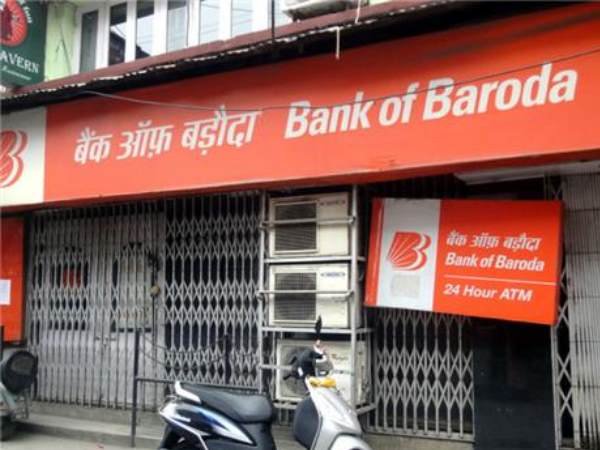A glance at National Pension System (NPS)
The National Pension System (NPS) is a market-linked retirement savings plan that provides market-based returns. Until the age of 60 you can invest in this scheme. The NPS scheme offers four different categories of funds and two different investment methods. You can invest in any of four available funds using the Active choice strategy, or you can use the Auto choice strategy and to get your investments automatically allocated to the various funds. The scheme’s return is determined by the financial market. You can withdraw 60% of the accrued corpus in a lump sum at maturity, and the remaining 40% of the corpus will pay you annuities for the rest of your life.
A glance at Atal Pension Yojana (APY)
The Atal Pension Yojana (APY) scheme, which was introduced by the government, is also a retirement-oriented fund. The scheme sought to support low-income individuals in the unorganised sector with assured pensions. You can invest in the scheme before you reach the age of 40, and the scheme matures until you reach the age of 60. There are five options for fixed pension amounts under the system. The amounts vary between Rs 1000 and Rs 5000. You select the amount of pension you receive when you invest in the scheme. The pension amount is chosen based on age, and the amount you will contribute to the plan is determined based on the frequency of contributions.
Similarities between APY and NPS
Many similarities exist between the APY and the NPS system. The following are some of them:
- Both are retirement-oriented investments that assist you in building a retirement fund.
- The Pension Fund Regulatory and Development Authority (PFRDA) regulates both the schemes
- Both NPS and APY have a guaranteed amount of pension for the rest of your life until the plans mature.
- Contributions to both schemes are tax-deductible up to a maximum of INR 1.5 lakhs under Section 80 CCD (1). Furthermore, contributions of up to INR 50,000 to both schemes are eligible for an additional deduction under Section 80 CCD (1B).
- The pension benefit received under both the initiatives is taxable in your pocket as per your slab rates.
Difference between APY and NPS
Despite the fact that the aforementioned findings prove that both of these schemes have certain similarities, the fact remains that they are somewhat distinct. The following points illustrate the key distinctions between the NPS and APY:
Eligibility- You must be between the age of 18 and 40 to participate in the APY scheme. Furthermore, the scheme is only open to Indian citizens who reside in India. The age limit for the NPS program, on the other hand, is 18 to 60 years old, and it is open to both Indian citizens and non-resident Indians.
Contribution cap– The amount of contribution to the APY scheme is determined by the age when you join, the guaranteed pension amount you select, and the frequency at which you contribute to the scheme. The monthly contribution starts at Rs 42 and can go up to Rs 8581 half-yearly. The amount of the contribution under the NPS scheme is determined by the account chosen. If you just want to open a Tier I account, the minimum donation is Rs 500. Following that, a minimum contribution of Rs 1000 per year is required to keep the account operational, with a minimum contribution amount of Rs 500 per contribution. If you also select the Tier II Account, you must deposit a minimum of Rs 1000 to open the account. After that, you must make a minimum contribution of Rs 250 to keep the account functioning. The maximum contribution cap under NPS has no upper limit.
Payable pension amount– The amount of pension due under the APY scheme is fixed in advance, and the contribution is set depending on the pension preferred. A pension of INR 1000, INR 2000, INR 3000, INR 4000, or INR 5000 can be selected. As a result, the plan is also known as a fixed benefit pension plan. The pension amount under the NPS scheme is determined by the accrued corpus available at the scheme’s maturity date as well as the pension option chosen. As a result, the pension is not assured and is based on the amount you have spent.
Taxation- Since both schemes have equal tax benefits, NPS has an advantage over APY because it helps salaried employers to seek tax benefits. If the employer contributes up to 10% of the employee’s basic salary, with dearness allowance, to the NPS scheme, the contribution is also permitted as a deduction under Section 80 CCD (2). This deduction is in addition to the deductions permitted by Sections 80 CCD (1) and 80 CCD (1B). Furthermore, even if you choose the current tax regime that eliminates deductions and exemptions, the employer’s allocation to the NPS scheme is always permitted under Section 80 CCD (2). This additional advantage is not provided by the APY scheme.
Pension options- The APY scheme provides you with a guaranteed pension for the rest of your life. Furthermore, if your spouse is still alive at the time of your death, the pension is accrued to her. On the other side, there are seven annuity plans available under the NPS system. You will get lifetime annuities based solely on your life or joint-life annuities. By selecting an increasing annuity alternative, the annuity balance will be increased annually. Furthermore, in some cases, the purchase price is refunded in the event that you or your spouse dies.
Types of account- Only one account is allowed per investor under the APY scheme, while the NPS scheme allows for two types of accounts: Tier I Account and Tier II Account. Tier I Account is mandated, whereas Tier II Account is optional for an investor.
Premature withdrawal option- Partially withdrawing funds before the maturity date is not permitted under the APY scheme. Only in the event of the investor’s death or serious illness is it possible to withdraw the account’s accrued balance early. In the event of the investor’s death, the spouse can elect to keep the account open until maturity and then receive the promised pension. Premature withdrawals are even permitted under the NPS. Withdrawals from the Tier II Account are unrestricted and can be made at any time. However, there are certain limitations with the Tier I Account. Withdrawals from the Tier I Account are permitted beginning in the third year of investment and are limited to specific circumstances such as marriage, medical emergencies, home purchases, and so on. Partially withdrawing funds from a Tier I Account is permitted up to 25% of the account’s balance. You can withdraw 20% of the accrued corpus in a lump sum if you close the scheme prematurely. The remaining 80% will have to be maintained for annuities.
Asset allocation- The contributions in the APY scheme are only allocated in government securities in a specific way. The funds invested in the NPS scheme, on the other hand, are invested in four types of funds named A, C, E, and G i.e. ultra safe, conservative, balanced and aggressive. To get attractive returns on your investments and build a strong corpus, you can opt to invest in equity and debt through NPS funds.
Maturity benefits- The pension amount promised by the APY scheme is paid upon maturity. That being said, under the NPS, 60 per cent of the accrued corpus can be withdrawn as a lump sum, with the remaining 40% of the corpus being used to fund an annuity for the pension benefit.
Our take
The equity market has a lot of upsides, and the NPS pulls more salaried people than the APY, which is suitable for citizens from the unorganised field. A subscriber under NPS can diversify his or her portfolio. However, he or she cannot invest only in equities. They can also invest in other asset groups such as government bonds, corporate debt, and other. The APY pension plan is ideal for low-income individuals who cannot afford market volatility. As both pension saving schemes are tax-saving savings strategies, a salaried person can opt for both. Investors’ capital is directly linked to the market in NPS, but it’s just for investors with a moderate risk appetite. There are two types of NPS accounts: active mode and auto mode. The first is a debt option, while the second is a market-linked alternative. With an additional tax benefit, the performance of NPS schemes has soared from 9% to 17% (source: NPS Trust) in the last five years as of now, which is a fantastic return over a longer period of time. So, depending on your risk appetite, choose one or both to build a retirement fund for yourself.





 Booming sales
Booming sales


